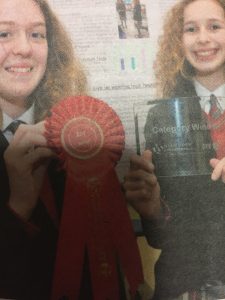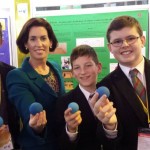By Jacqueline Hogge, Tuam Herald
CLAREGALWAY students are leading the North Galway charge at the BT Young Scientist Exhibition with five projects from Coláiste Bhaile Chláir being chosen to compete in the prestigious competition.
The five projects representing Bhaile Chláir will see 13 students contest both the junior and intermediate categories in what is the fourth successive year that the school has reached the exhibition stage of the competition.
They are joined by students from Athenry, Ballygar and Glenamaddy with a total of eight projects from schools in the north and east of the county being selected for the competition that takes place at the RDS in January,
Coláiste an Eachraídh in Athenry are embarking on their first ever Young Scientist adventure with a Fifth Year student contesting the Social and Behavioural Science category at senior level.
In Ballygar, Coláiste Mhuire is looking forward to its third successive year at the exhibition. The school will be represented by a group of three students have conducted a lifestyle survey among their peers to investigate the different approaoches young people have as well as promoting healthier options where needed.
Glenamaddy Community School students have chosen to demonstrate the benefits of peat and wood ash for environmental uses, instead of householders being charged to dispose of it through refuse collectors.
Last year Alaidh Fox and Deirdre Fox, then second Year students, scooped the Analog Devices Best Technology Aware for their device to help the visually impaired navigate everyday life.
The project also won the Google Creative Technology Award, a perpetual trophy for the school, along with €2,500 to invest in scientific equipment as part of three prizes they won in the competition overall.
Their fellow students, Ella Rose McIntyre and Roisin Cellarius, also collected first prize in the Junior Group section of the Social and Behavioural Sciences category with their project examining the scientific effects of wearing high heels.
This year, the school’s entries range from a bike collision sensor, which can detect if a moving vehicle is within 1.5 metres of a cyclist, to the development of devices to help elderly people administer medicine correctly.
Other projects examine the possibility that a fixed mindset may be the reason people find learning maths difficult; the development of an app which aids people with sensory processing disorders; and an analysis of how the Internet of Things (IoT) can be used in the home to enhance and improve daily living.




